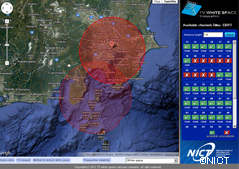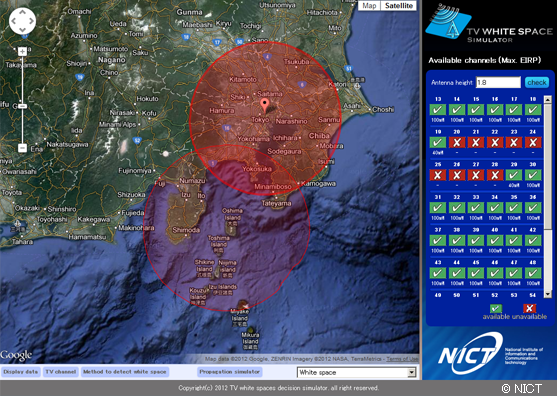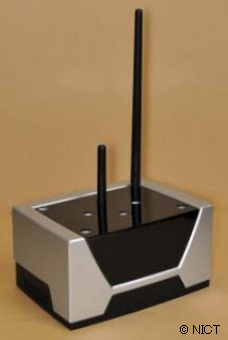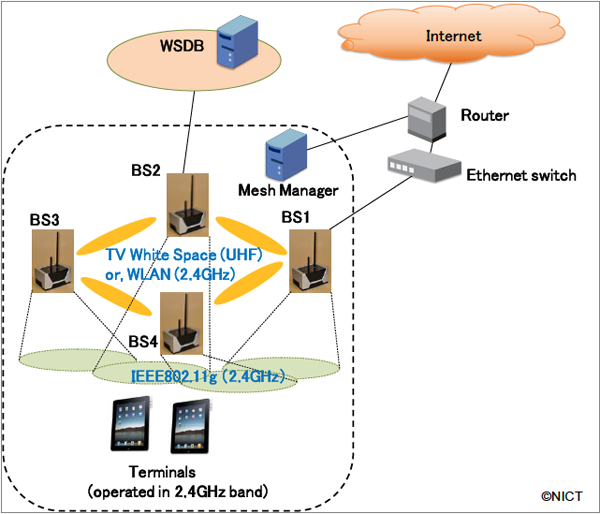Home > Press Release > Wireless communication in TV white space succeeded
- By using database to provide available channels, enabling traffic off-load -
The National Institute of Information and Communications Technology (NICT, President: Dr. Hideo Miyahara) has succeeded in wireless communication in the TV broadcast band (470MHz-710MHz) where its operational channels are set to radio equipments according to calculation results provided from the white space database. Efficient wireless communication environment to accommodate increasing mobile traffic is expected, which consequently loads off traffic of wireless networks where current throughput is not sufficiently achieved due to traffic congestion and radio interference.

Appendix


White Space Base Station

This research was conducted under a contract of R&D for radio resource enhancement, organized by the Ministry of Internal Affairs and Communications, Japan.
Technical Contact
Kentaro Ishizu
Smart Wireless Laboratory
Wireless Network Research Institute
Tel: +81-46-847-5076
E-mail: 


































Media Contact
Public Relations Department
Tel: +81-42-327-6923
E-mail: 

























